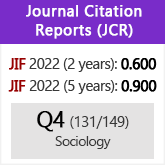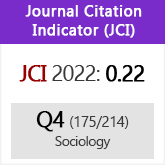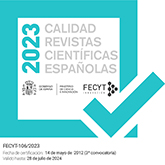Moda y globalización. De la estética de clase al estilo subcultural
DOI:
https://doi.org/10.3989/ris.2004.i39.266Keywords:
Cultural Change, Individualism, Models of DiffusionAbstract
The central hypothesis of this investigation consists in questioning the descending filtrate model and arguing in favour of the validity of the model of virulence following the impact of economic and cultural globalisation. This article comprises three parts. Following the presentation of the conceptual framework of the three most accepted models for the spread of fashion, an examination is carried out of the changes brought about by the move from production in series to flexible production in the textile industry and in garment manufacturing, which takes us beyond the vision of the descending filtrate. Finally, there is an analysis of the conditions under which cultural globalisation confronts us with anew multicultural individualism, that is to say, taste as an expression of the tribal environment. This last consideration invites us to reconsider the reference models Ander the conditions of globalisation and to affirm that new fashions do not emanate from a single source, but filter down from different points and propagate like AIDS and epidemics.
Downloads
Download data is not yet available.
Downloads
Published
2004-12-30
How to Cite
Martínez Barreiro, A. (2004). Moda y globalización. De la estética de clase al estilo subcultural. Revista Internacional De Sociología, 62(39), 139–165. https://doi.org/10.3989/ris.2004.i39.266
Issue
Section
Articles
License
Copyright (c) 2004 Consejo Superior de Investigaciones Científicas (CSIC)

This work is licensed under a Creative Commons Attribution 4.0 International License.
© CSIC. Manuscripts published in both the printed and online versions of this Journal are the property of Consejo Superior de Investigaciones Científicas, and quoting this source is a requirement for any partial or full reproduction.All contents of this electronic edition, except where otherwise noted, are distributed under a “Creative Commons Attribution 4.0 International” (CC BY 4.0) License. You may read here the basic information and the legal text of the license. The indication of the CC BY 4.0 License must be expressly stated in this way when necessary.
Self-archiving in repositories, personal webpages or similar, of any version other than the published by the Editor, is not allowed.

















